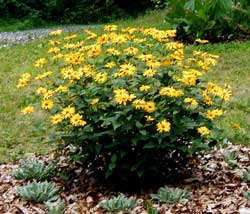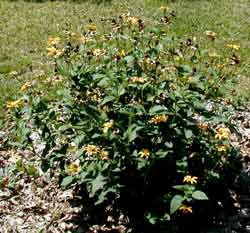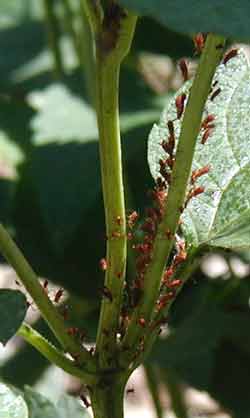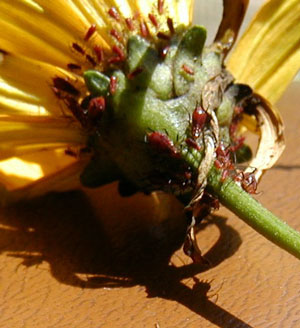Extremely hot and dry weather produces visible changes in the landscape. Trees drop leaves too early for the autumn leaf drop. Hues of yellow and red can be seen among the dull greens of the forest.
Grass stops growing and sounds like crinkley paper when walked upon. Mushrooms hide in the sweet syrup of their fungal thread-like mats, waiting for a wet opportunity to assemble themselves and appear above ground.
Insects flourish in huge numbers as they drink the sap of their favorite plants. My Rudbeckia that I carefully transplanted this Spring all but withered to a crisp. Over the last week I saw the stems and blooms drying up, and counted the early death as another victim of this year’s drought and extreme heat.

A beautiful Rudbeckia plant sporting its bright yellow flowers in the middle of July.
I took my pruners and a bucket out to the once beautiful rudbeckia to clip off the dead stems. At once I saw hundreds upon hundreds of red aphids!

The same Rudbeckia plant a month later after attack by aphids.
Aphids come in many colors and will attack many plants. Some aphid species are very particular about their host plant, others not so much. With literally thousands of species of aphid around the world, it would be surprising to not come across them at some point.
Aphids line up along plant stems with their heads pointed toward the stem so that their needle-like mouth parts, called stylets, can pierce into the plant. Here, they drink the plant’s juices to the demise of the plant.

Red aphids all along the stems of a rudbeckia plant.

When conditions are right for it, aphids breed without sex so many, many young can be produced in a short amount of time. Note the small aphids next to the adults.
Aphids will drink the plant’s juices from stems and flowers. An identifying characteristic of aphids is the presence of two short projections, or cornicles, that extend from the posterior of the abdomen. A sweet honeydew liquid is released from the cornicles which is sometimes farmed by ants. Indeed, the presence of ants is sometimes a clue that aphids are nearby.

Note the abdominal cornicles projecting out from the shadow of an aphid.
I filled a bucket with the stems that I pruned and dumped that in a compost heap. The remaining stems are about 10-12 inches tall. I’ll be watching to see if there will be more plant growth into the fall or if the aphids continue to consume this once beautiful plant.